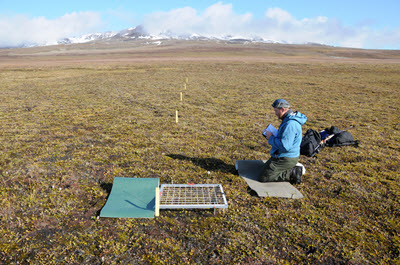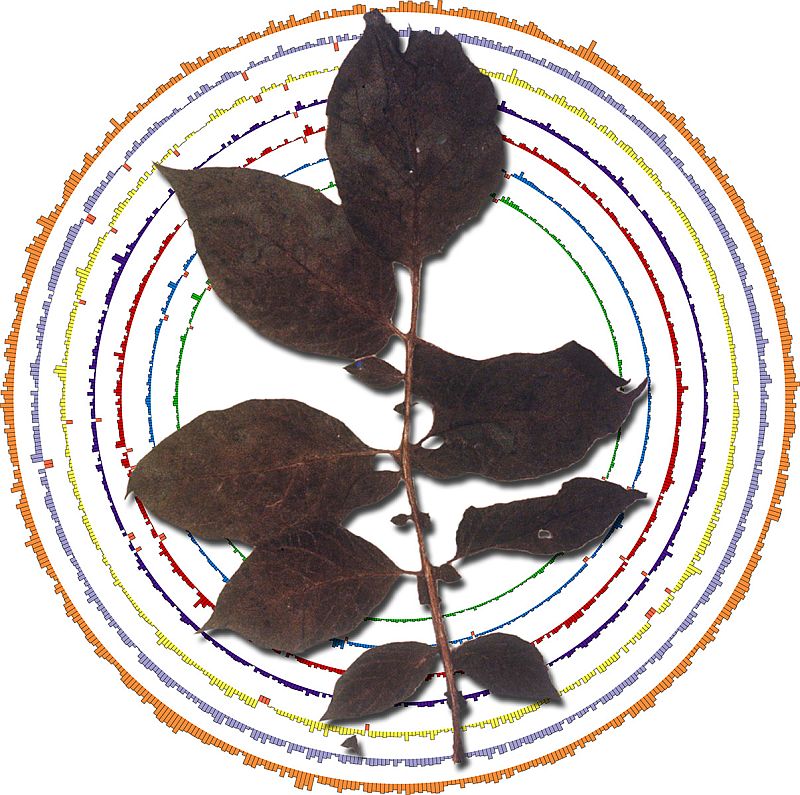Vitenskapsmuseet: Biologi
Biologi
Ansatte ved Institutt for naturhistorie veileder masteroppgaver i biosystematikk, biogeografi, økologi og bevaringsbiologi. Dette er fagområder hvor det drives aktiv forskning ved seksjonen og som kan knyttes til ulike studieprogram ved NTNU.
Spesielt masterprogrammene i Ecology, Behaviour, Evolution and Biosystematics, Natural Resource Management, Marine Coastal Development og Nordic Academy of Biodiversity and Systematic Studies (NABIS) er aktuelle områder. Som masterstudent ved Institutt for naturhistorie får du tilgang til gode laboratoriefasiliteter, en egen plass på lesesalen, et godt arbeidsfellesskap og muligheter for feltarbeid.
Ansatte ved Institutt for naturhistorie underviser på emner i biologi ved NV-fakultetet og har et spesielt ansvar for undervisningen i biosystematikk.
Ideer til tema for masteroppgaver
Evolution in mosses
 Bryophytes were among the first organisms to conquer land for about 480 million years ago. While many organisms have gone extinct on the way to present, bryophytes are still one of the most important groups of land plants. Are you interested in evolutionary questions like speciation, relationship between species (phylogeny) or the history behind species distribution patterns (phylogeography)? We are also engaged in applied research related to conservation biology and effects of climate change.
Bryophytes were among the first organisms to conquer land for about 480 million years ago. While many organisms have gone extinct on the way to present, bryophytes are still one of the most important groups of land plants. Are you interested in evolutionary questions like speciation, relationship between species (phylogeny) or the history behind species distribution patterns (phylogeography)? We are also engaged in applied research related to conservation biology and effects of climate change.
Examples of Master papers
Please contact Kristian Hassel if you want learn more about our master opportunities.
Evolutionary genomics of museum collections

An untapped wealth of specimens lies in wait within the world’s natural history collections. We use cutting-edge sequencing and evolutionary genomic analysis approaches to reconstruct the evolution of genomes and populations using both ancient and modern DNA, usually involving plants. Skills in basic scripting/coding are extremely valuable in this work.
Some inspiration for potential M.Sc. projects:
- Gene enrichment and population genomic structure in historical (1845-52) samples of the potato pathogen Phytophthora infestans, which caused the Irish potato famine.
- Sequencing historical samples of the invasive plant common ragweed (Ambrosia artemisiifolia) to determine the genomic basis of its success.
- Whole-genome phylogenetic analysis and functional diversity of ‘Darwin’s finches of the plant world’, the Galápagos daisy trees (genus Scalesia).
- Spatial phylogenetic analysis of plant diversity at vastly different taxonomic levels, from intra-species to the entire flora of Norway.
Please contact Associate Professor Michael Martin for more information.
Marine fjord migration and habitat use of anadromous brown trout Salmo trutta
During our studies on anadromous brown trout (sea trout), we try to reveal the underlying causes between different marine migratory strategies. Examples of research questions are if aquaculture, water temperature or levels of salinity influence migratory behaviour, habitat use or growth in the marine environment. Such information will be important in order to evaluate if dynamic environmental changes may confine the marine feeding migration of sea trout. Project: The secret life of Sea Trout
Please contact Jan Grimsrud Davidsen for more information.
Example of Master paper:
Vascular plants and lichens
 Molecular systematics of vascular plants or lichens. These master projects study hereditary molecular differences at various taxonomic levels, mainly in DNA sequences, to reveal the evolutionary history of an organism. Various approaches to multi-locus DNA sequencing can be used, including traditional Sanger sequencing and various target enrichment HTS approaches. Data will be analysed phylogenetically, and resulting hypotheses of relationships will form the basis for further analyses of character-evolution, historical biogeography and taxonomy. Projects will involve both field- and laboratory work. Molecular, ecological and morphological data will be obtained from freshly collected material as well as from historical specimens housed in various herbaria.
Molecular systematics of vascular plants or lichens. These master projects study hereditary molecular differences at various taxonomic levels, mainly in DNA sequences, to reveal the evolutionary history of an organism. Various approaches to multi-locus DNA sequencing can be used, including traditional Sanger sequencing and various target enrichment HTS approaches. Data will be analysed phylogenetically, and resulting hypotheses of relationships will form the basis for further analyses of character-evolution, historical biogeography and taxonomy. Projects will involve both field- and laboratory work. Molecular, ecological and morphological data will be obtained from freshly collected material as well as from historical specimens housed in various herbaria.
Please contact Kristine Bakke Westergaard for more information.
Woody plants, herbivores and climate change
How do climate and herbivory interact to determine ecosystem change? The annual ring record in woody plants provides a window to the past, allowing us to infer previous environmental conditions. Measuring tree rings in trees and shrubs taken from areas with known herbivore densities we can disentangle the impacts of climate and ungulate herbivores on the establishment and growth of trees and shrubs. Project pages Managing ecosystem services in low alpine cultural landscapes through livestock grazing
For more information, please contact James Speed.